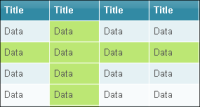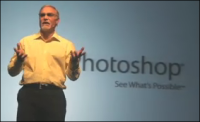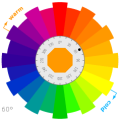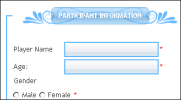 Tablecloth is a lightweight, easy to use way to add style and behaviour to HTML table elements. By simply adding 2 lines of code to an HTML page you will have styled and active tables that your visitors will love.
Tablecloth is a lightweight, easy to use way to add style and behaviour to HTML table elements. By simply adding 2 lines of code to an HTML page you will have styled and active tables that your visitors will love.
 Photoshop Express has been in development for at least half an year now, and during a presentation at the recent Photoshop World event the online application came across as nearly finished. John Loicano, Senior Vice President at Adobe over the Creative Solutions Business Unit, presented a product that seemed to work without a hitch, so now we have to wait and see when it will launch officially.
Photoshop Express has been in development for at least half an year now, and during a presentation at the recent Photoshop World event the online application came across as nearly finished. John Loicano, Senior Vice President at Adobe over the Creative Solutions Business Unit, presented a product that seemed to work without a hitch, so now we have to wait and see when it will launch officially.
In this listing the focus was to provide a selection that covers as many different types fn online CSS tools as possible. The criteria were the quality of code, friendly interface, and usefulness. Feel free to discuss the choices and omissions in the comments below.
As you are most likely aware, the current version of HTML is designated 4.01. It has been in use since 1999, and since that time the web has gone mainstream, while HTML 4 established itself as the immutable standard, together with XHTML 1. Still, nothing lasts forever: big companies are dedicating staff to work on the creation of a new and improved version of the venerable mark-up language.
 Color, along with texture, form, shape, etc., is one of the fundamental elements of design: it is a basic visual component of any composition. In the age of the Internet, working with color for designing web pages still follows age-old rules like color harmonies and balance, but in the same time new concepts, like web-safe colors, usability, and RGB values, have emerged. Luckily, there are free tools that help the web designer deal with the new issues, and you'll find some of them listed in this post.
Color, along with texture, form, shape, etc., is one of the fundamental elements of design: it is a basic visual component of any composition. In the age of the Internet, working with color for designing web pages still follows age-old rules like color harmonies and balance, but in the same time new concepts, like web-safe colors, usability, and RGB values, have emerged. Luckily, there are free tools that help the web designer deal with the new issues, and you'll find some of them listed in this post.
Ah, the web design classics. Back when the web was but several years old, Microsoft created their first web page. Today, they are kind enough to provide a screenshot of that jewel for our viewing pleasure.
 The nice folks over at the web-based form creation and hosting service FormAssembly have created a repository of customized CSS designs for web forms. The designs are free to download, modify and use.
The nice folks over at the web-based form creation and hosting service FormAssembly have created a repository of customized CSS designs for web forms. The designs are free to download, modify and use.
 Normally, you would need to fire up a complex image editing application like Photoshop or Gimp just to perform the trivial task of resizing an picture. In that case, many people would find themselves confused by the numerous options and menus. Ingenuity to the rescue: now it is possible to resize images by either using a newbie-friendly program, called iZoom, or with one of several online applications.
Normally, you would need to fire up a complex image editing application like Photoshop or Gimp just to perform the trivial task of resizing an picture. In that case, many people would find themselves confused by the numerous options and menus. Ingenuity to the rescue: now it is possible to resize images by either using a newbie-friendly program, called iZoom, or with one of several online applications.
Sometimes, it is easier to design pages by specifying CSS rules for each distinct HTML element, for example:
<p style="color: green">This is green text.</p>But this practice, while saving time and removing the need for meticulous planning in the early stages of a project, can prove troublesome later on, when you try to make your code more standards-compliant and, well, elegant. Enter the styles-to-classes converter.
Our sister site HostReview is running a visitor survey. The more information the survey gathers, the easier it will be for our team to create a better user experience. And did I mention we will give a 30GB iPod to one of the people who take the survey?
